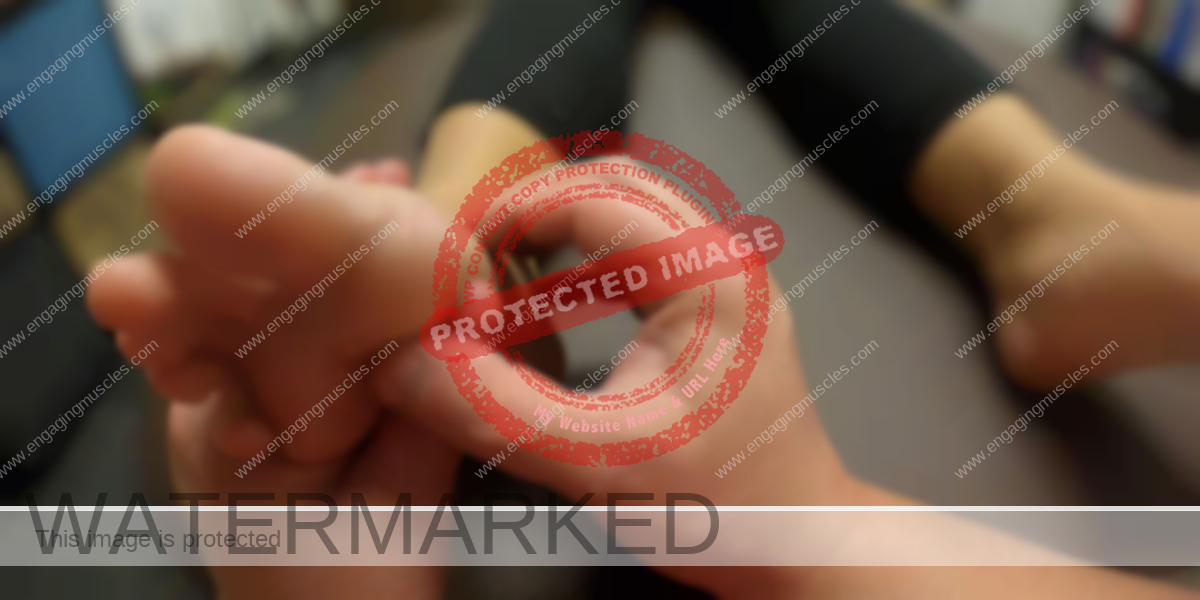Question: Is massage effective for plantar fasciitis?
I realize how odd what you’re about to read is, especially when it’s coming from someone who’s been licensed to practice massage therapy for 28 years.Even so, most massage techniques said to be suitable for your plantar fascia aren’t worth doing.
How your massage therapist addresses your plantar fascia determines its effectiveness.
More importantly, plantar fasciitis (PF) has little to do with the area of your heel where the plantar fascia is sensitive to the touch.

Instead of plantar fasciitis being about where your plantar fascia attaches to your heel, it’s more about the muscles throughout your trunk and spine.
After listening to what every expert and their uncle recommends for your plantar fascia, I realize how far from the norm what I’m sharing with you is.
In 2021, the conventional wisdom on what’s best for your plantar fascia added up to four hundred million dollars in the United States. Of course, that dollar amount is up from previous years.While we are on the subject of addressing the symptoms that accompany plantar fasciitis, in 2021, store-bought orthotic insoles and the custom orthotics sold by licensed professionals added up to 3.2 billion globally.There is an old adage in physical medicine that says if you are treating the area of pain, you are treating the symptom and not the cause. There is great truth in this principle.
— Albert Schweitzer
Whether you have flat feet or high arches, your feet interact with the ground for thousands of steps daily. When muscles are underperforming, they are unable to control motion that’s provided by muscles capable of playing their role at the right time.
Although it can be challenging to feel how hard your foot is coming into the ground, I can promise you this: your feet are taking a beating for what your trunk and spinal muscles aren’t capable of providing.
When your muscles don’t control pronation of your foot, you will also have less spring in your step.
Ultimately, you want your feet to function more like a spring and less like a Slinky.
Is Pronation Bad?
[youtube-feed feed=2] As for those first few steps in the morning, you will continue to struggle until your brain recognizes that muscles throughout your trunk and spine are playing their role to the best of their ability.
In other words, until your brain no longer perceives the need to protect you from yourself, no amount of calf stretches will change how difficult those first few steps are in the morning.
For years, practitioners who work with the musculoskeletal system have said (paraphrasing), When you have an increase in stability throughout your trunk and spine, you’ll also have increased stability throughout your extremities.
While that’s true, what’s thought to increase stability isn’t allowing for that outcome. (emphasis added)
If we are honest, sadly, the vast majority of massage therapists, physical therapists, chiropractors, athletic trainers, and podiatrists don’t have the skill set to know whether a muscle is tight or underperforming.
With incomplete information in tow, most experts in those fields default to recommending calf stretches and arbitrarily release muscles and fascia.

Most licensed massage therapists have been trained to stretch and release soft tissues (muscles and fascia).
Stretching and releasing muscles and fascia will increase mobility and flexibility, but what about stability?
(Principles)
The truth is it’s impossible to increase mobility (joints) and flexibility (muscles) without the stability muscles provide.
If you have wondered why the feel-good feelings of stretching and deep tissue massage have not held for longer than 24 hours, it’s because neither allows for more stability.
When you get deep tissue massage for your plantar fascia, and the technique allows for increased stability, you’ll end up with more mobility and flexibility that does hold.
While it’s not uncommon to have plantar fasciitis for months, even years, the missing piece of the puzzle is the stability that muscles provide.
(Prevention)Your plantar fascia is a ligament, and muscles capable of providing stability serve as your first line of defense to prevent plantar fasciitis.
Although most massage therapists, physical therapists, athletic trainers, chiropractors, and podiatrists don’t know to share this with you, the truth is it’s possible to have underperforming muscles.Muscles are tight because muscles are underperforming. (emphasis added)
For massage to be effective for plantar fasciitis, the underperforming muscles must be addressed with a friction massage technique that improves the muscles’ ability to contract at the right time.

Before you make an appointment with a licensed massage therapist, ask them if they will address your plantar fascia.
If the massage therapist doesn’t mention underperforming muscles and increasing stability, you know to take a pass.When researching whether the licensed massage therapists near you are a good fit, I recommend looking at their testimonials.
For example, is there social proof that a massage therapist near you has had a positive outcome with a client with plantar fasciitis?
If you want to work with me, you can meet me online or at my Dallas office. Either way, you will leave plantar fasciitis in your rearview.Thanks for taking the time to read this post! If you enjoyed this post, please subscribe to Engaging Muscles. You can also like Engaging Muscles on Facebook, subscribe to my YouTube Channel, or feel free to connect with me on Twitter @rickmerriam.
- Author Bio
- Latest Posts

I have held a license to practice massage therapy for over 29 years. Early in my career, I was a nationally certified personal trainer for 18 years. During that time, I completed thousands of one-on-one private training sessions. I went on to teach biomechanics to personal trainers, group exercise instructors, and physical therapists throughout New England.
I worked as a sports massage therapist at ESPN.
Over the last few years, I have been quoted in Runner’s World UK, Massage Therapy & Bodywork, Massage Magazine, IDEA Fitness Journal, Massage & Fitness Magazine, and The Guardian Liberty Voice. I have also served as an applied biomechanics consultant for the fitness staff at Canyon Ranch, The Greenbrier, and ESPN.
From 2009 to 2018, I immensely enjoyed teaching applied anatomy & kinesiology at Parker University.
I offer the best deep tissue and sports massage at Engaging Muscles Massage in Dallas, Texas.
